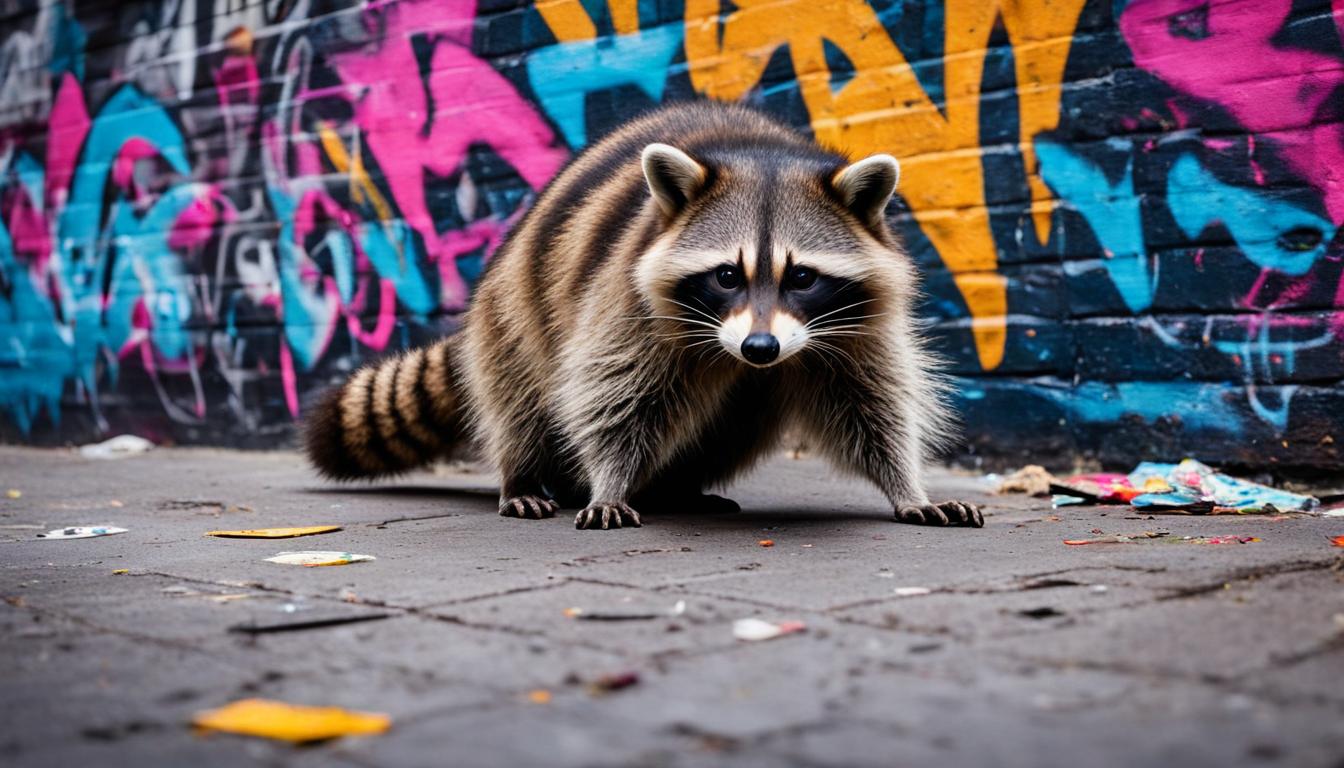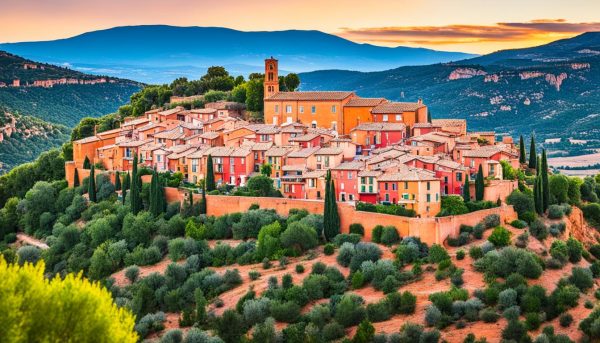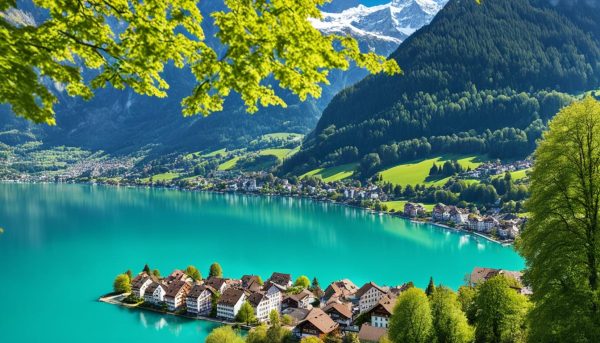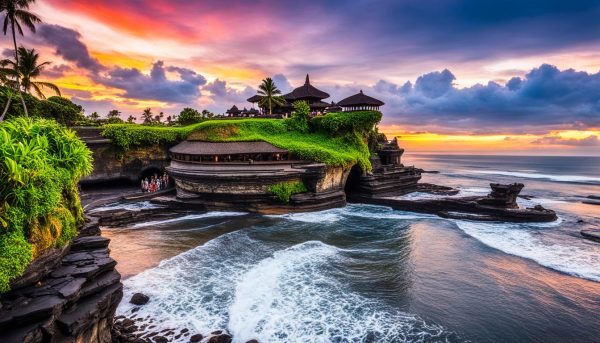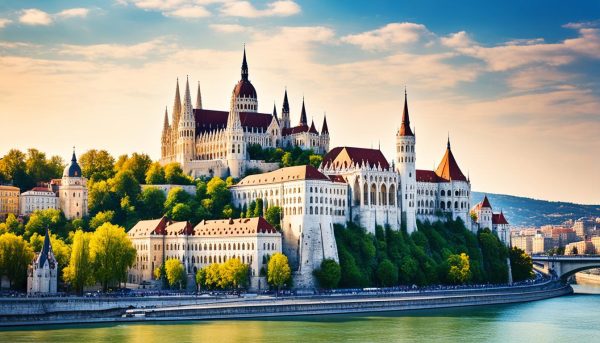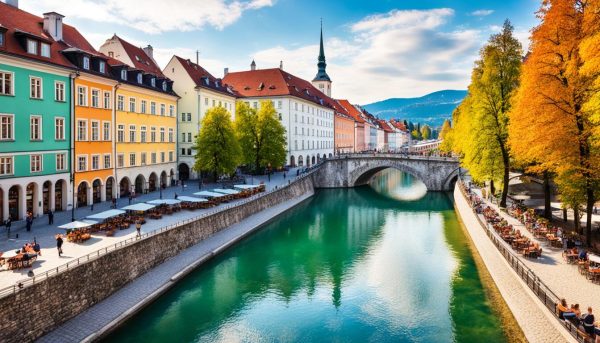Welcome to the fascinating world of urban wildlife photography! In an era where cities are expanding and encroaching on natural habitats, the presence of diverse animal species in urban settings is both surprising and awe-inspiring. The ability to capture these remarkable creatures in the midst of bustling city life is a testament to the adaptability and resilience of nature in the face of human development.
The recent winners of prestigious wildlife photography competitions showcase the captivating beauty of urban wildlife. Laurent Ballesta’s stunning photograph of a rare golden tri-spine horseshoe crab earned him the Grand Title award in the Wildlife Photographer of the Year 2023 competition. This image, taken in the protected waters off Pangatalan Island in the Philippines, highlights the vibrant and often overlooked life that exists even within urban landscapes.
Photographers from around the world are also embracing the challenge of capturing wildlife in urban settings. The Urban Wildlife Photography Awards recognizes the growing trend of photographing city animals and the unique perspectives they offer. From coyotes roaming the streets of Toronto to raccoons finding shelter in our neighborhoods, these images tell the tales of thriving wildlife amidst our concrete jungles.
As we continue to witness the wildlife’s remarkable adaptability to urban life, it is crucial that we learn to coexist with and protect these creatures. By understanding their behaviors and needs, we can create harmonious environments that support both humans and urban wildlife.
Key Takeaways:
- Urban wildlife photography showcases the beauty and resilience of animals in the city.
- Notable photographers have won awards for capturing urban wildlife in their natural habitats.
- Animals adapt and thrive in urban environments, often finding food and shelter among human-built structures.
- Coexistence with urban wildlife is crucial, requiring wildlife management strategies and human education.
- Conservation efforts are needed to protect and preserve urban wildlife ecosystems.
Capturing Wildlife in Urban Settings
Urban wildlife photography has gained significant popularity in recent years, as photographers explore the dynamic relationship between nature and city life. The Urban Wildlife Photography Awards is a prestigious competition that celebrates the art of photographing city animals in their natural habitat. With over 6,000 entries submitted from photographers worldwide, the competition showcases the beauty and diversity of urban wildlife.
“The Urban Wildlife Photography Awards offers a unique platform for photographers to showcase their talent and capture the essence of urban wildlife. It’s fascinating to see how animals adapt and thrive in the midst of our bustling cities.”
The Overall Winner of the Urban Wildlife Photography Awards was Andrew Interisano, whose captivating image of two coyotes in Toronto captured both the judges’ attention and the spirit of urban wildlife. Interisano’s photograph beautifully depicts the resilience and adaptability of animals in urban settings. Other notable photographs include Austin Montero’s striking image of a rat in Cuernavaca, Mexico, and Jill Finney’s captivating photo of a raccoon in Toronto.
Photographers capturing city animals face unique challenges and employ various techniques to achieve stunning results. To successfully photograph urban wildlife, photographers must blend into their surroundings and be patient observers. Additionally, understanding animal behavior and habitat preferences are key factors in capturing authentic and compelling moments.
Techniques for Urban Wildlife Photography
1. Research your subjects: Familiarize yourself with the behavior, habits, and habitat of the animals you intend to photograph. This knowledge will help you anticipate their movements and capture natural interactions.
2. Choose the right equipment: Use a telephoto lens to get close-up shots while maintaining a safe distance from the animals. A tripod can also be beneficial for achieving sharp, stable images.
3. Embrace natural light: Take advantage of the ambient lighting in urban environments to create dramatic and atmospheric photographs. Golden hour, the period shortly after sunrise or before sunset, offers soft, warm light that enhances the beauty of wildlife in urban settings.
4. Explore different angles and perspectives: Experiment with shooting from low angles, rooftops, or through interesting frames to add depth and visual interest to your photographs.
5. Be patient and observant: Urban wildlife can be elusive, so patience is key. Spend time in the area where you expect to encounter your subjects, observing their behavior and waiting for that perfect moment to capture.
Adapting to Urban Life: Animals in Cities
As urban areas continue to expand, wildlife faces the challenge of adapting to their new environment. Corey Arnold’s captivating “Cities Gone Wild” series delves into the remarkable ways in which animals adjust to urban settings. Focusing on black bears, coyotes, and raccoons living across various cities in the United States, Arnold’s photography sheds light on the behavior and resilience of these urban dwellers.
Amidst the bustling cityscape, these animals have become masters of urban survival. They navigate the concrete jungle with an uncanny ability to find food and shelter amidst the human-built structures. From foraging in dumpsters to traversing rooftops, they have demonstrated remarkable resilience and adaptability.
“Cities have become a new frontier for many wildlife species. They have learned to exploit the resources and opportunities provided by the urban landscape.”
However, this urban wildlife adaptation also comes with its share of challenges. As these animals interact with humans in urban spaces, conflicts can arise. Rummaging through trash cans, raiding gardens, or even nesting in people’s homes can lead to encounters that require careful management and understanding.
To emphasize the urban wildlife adaptation, a breathtaking photograph by Laurent Ballesta illustrates the remarkable ingenuity of animals in urban settings:
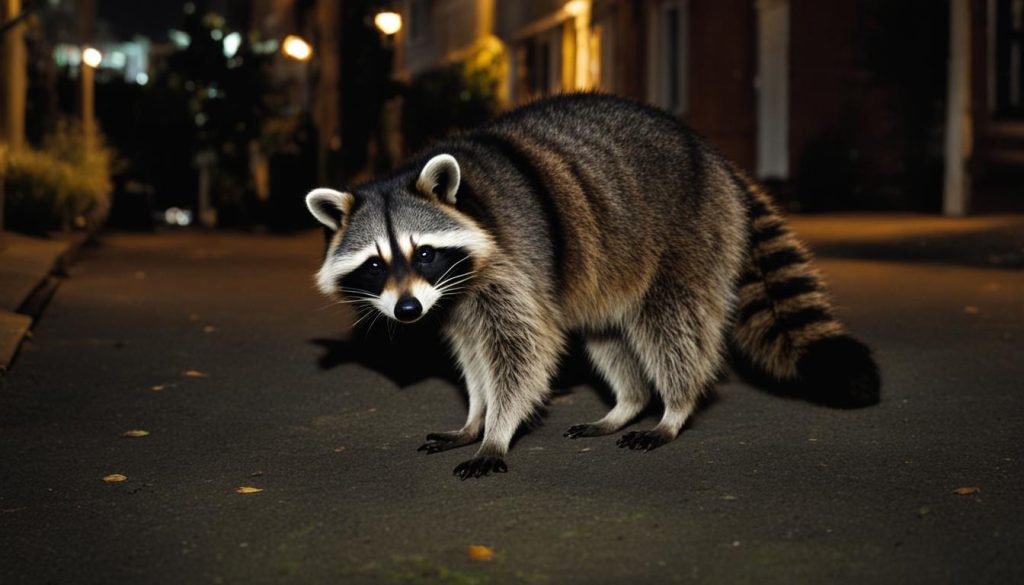
As seen in the photograph, a coyote effortlessly traverses a city street, a testament to its ability to integrate into the urban fabric.
The ability of animals to adapt to city life is awe-inspiring, reflecting their resilience, resourcefulness, and ability to coexist alongside humans. While conflicts may arise, fostering understanding and implementing effective management strategies can help minimize negative interactions and promote a harmonious relationship between humans and urban wildlife.
Adaptation Strategies of Urban Animals
Urban animals showcase a range of behavioral adaptations that enable them to thrive in city environments. Some of the remarkable adaptations include:
- Nocturnal behavior: Many urban animals have shifted their activity patterns to avoid human disruptions and capitalize on undisturbed resources during the night.
- Exploiting artificial food sources: Trash cans, dumpsters, or even discarded food scraps can become essential sources of sustenance for urban animals.
- Building utilization: Animals like raccoons and squirrels skillfully exploit human-built structures, repurposing them as nesting sites or safe havens.
- Social tolerance: Urban animals often exhibit higher tolerance towards human proximity, acclimating themselves to the constant presence of people.
This remarkable ability to adapt and thrive in the urban landscape showcases the resilience and flexibility of these urban-dwelling creatures. It also highlights the need for humans to understand and appreciate the ecological roles of these animals, fostering a harmonious coexistence that benefits both wildlife and communities.
Coexisting with Urban Wildlife
As cities continue to grow and encroach on natural habitats, it becomes crucial to find effective ways to coexist with urban wildlife. This requires a comprehensive approach that includes wildlife management strategies, promoting human-wildlife interactions, and fostering understanding and appreciation for these animals.
Wildlife Management Strategies
Implementing wildlife management strategies is essential to mitigate conflicts between humans and urban wildlife. By securing garbage cans, removing attractants, and implementing proper waste management practices, we can reduce the chances of wildlife seeking food and shelter in residential areas. Additionally, creating green spaces and preserving natural habitats within urban landscapes can provide alternative resources for wildlife, reducing the need for them to venture into human-dominated areas.
Promoting Human-Wildlife Interactions
Creating opportunities for positive human-wildlife interactions can help foster understanding and appreciation for urban wildlife. Urban parks and nature reserves can serve as educational platforms, offering guided tours, workshops, and wildlife observation programs. By facilitating these experiences, people can learn about the behaviors and needs of urban wildlife, gaining a deeper understanding of their coexistence in the city.
“The connection between humans and urban wildlife goes beyond mere coexistence. It is about understanding our role in their habitat and finding ways to live harmoniously with nature in our cities.” – Jane Wilson, Urban Wildlife Conservationist
Fostering Understanding and Appreciation
Educating the public about urban wildlife is crucial for fostering understanding and promoting conservation efforts. By raising awareness about the ecological importance of these animals and the benefits they bring to urban ecosystems, we can encourage individuals to take proactive measures to protect and support urban wildlife. This can include initiatives such as wildlife-friendly gardening, providing nesting sites, and participating in citizen science programs that monitor urban wildlife populations.
Coexisting with urban wildlife requires a collective effort from individuals, communities, and governments. By implementing effective wildlife management strategies, promoting human-wildlife interactions, and fostering understanding and appreciation, we can create a harmonious environment where humans and urban wildlife can thrive together.
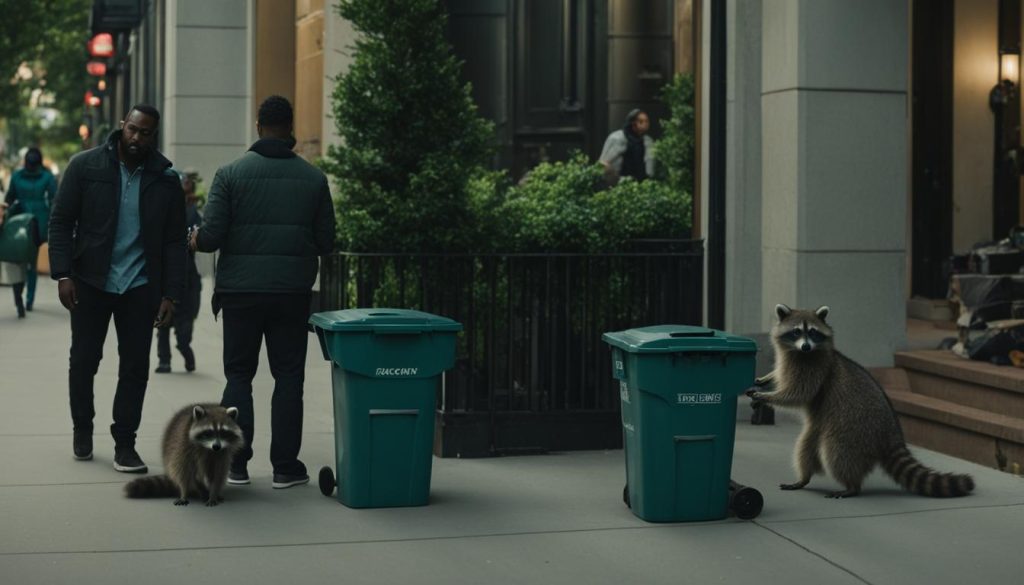
Conclusion
Urban wildlife photography provides a captivating window into the delicate balance between nature and urbanization. Through the lens of a camera, photographers have the power to ignite a sense of wonder and appreciation for the diverse wildlife that coexists in our cities.
By showcasing the beauty and resilience of urban wildlife, these images can serve as a powerful catalyst for urban wildlife conservation. They inspire individuals to take action in protecting and preserving the natural habitats that urban animals rely on to thrive.
As cities continue to expand and encroach upon natural spaces, it is imperative that we prioritize the conservation of urban nature. By implementing sustainable practices and creating green spaces within urban environments, we can create havens for urban wildlife and safeguard their future existence.
Through collaboration and concerted efforts, we can promote coexistence between humans and urban wildlife. By raising awareness, educating communities, and fostering a sense of responsibility towards protecting urban wildlife, we can ensure a harmonious and sustainable relationship.
FAQ
What is the Wildlife Photographer of the Year 2023 competition?
The Wildlife Photographer of the Year 2023 competition is a prestigious photography competition that celebrates the beauty and diversity of wildlife. It awards photographers for capturing stunning images of animals in their natural habitats.
Who won the Wildlife Photographer of the Year 2023 competition?
Laurent Ballesta won the Wildlife Photographer of the Year 2023 competition. His image of a rare golden tri-spine horseshoe crab was awarded the Grand Title. This is the second time Ballesta has won the Grand Title in the competition’s history.
How many entries did the Wildlife Photographer of the Year 2023 competition receive?
The Wildlife Photographer of the Year 2023 competition received nearly 50,000 entries from photographers in 95 countries.
What is the Urban Wildlife Photography Awards?
The Urban Wildlife Photography Awards is a photography competition that specifically focuses on capturing wildlife in urban environments. It celebrates the trend of photographing city animals and urban nature.
Who won the Overall Winner award in the Urban Wildlife Photography Awards?
Andrew Interisano won the Overall Winner award in the Urban Wildlife Photography Awards. His photo of two coyotes in Toronto was recognized as the best image in the competition.
What are some notable photos from the Urban Wildlife Photography Awards?
Some notable photos from the Urban Wildlife Photography Awards include Austin Montero’s image of a rat in Cuernavaca, Mexico, and Jill Finney’s photo of a raccoon in Toronto.
What is Corey Arnold’s “Cities Gone Wild” series about?
Corey Arnold’s “Cities Gone Wild” series explores how animals adapt to urban environments. The series focuses on black bears, coyotes, and raccoons living in cities across the United States.
How do animals adapt to urban environments?
Animals adapt to urban environments by finding food and shelter among human-built structures. They learn to navigate the urban landscape and make use of available resources.
How can we coexist with urban wildlife?
We can coexist with urban wildlife by implementing wildlife management strategies such as securing garbage cans and removing attractants. It is also important to educate the public about the behaviors and needs of urban wildlife.
Why is it important to protect urban wildlife?
As cities continue to grow and encroach on natural habitats, it is important to prioritize the conservation of urban wildlife. Urban wildlife plays a vital role in maintaining biodiversity and creating sustainable urban environments.

